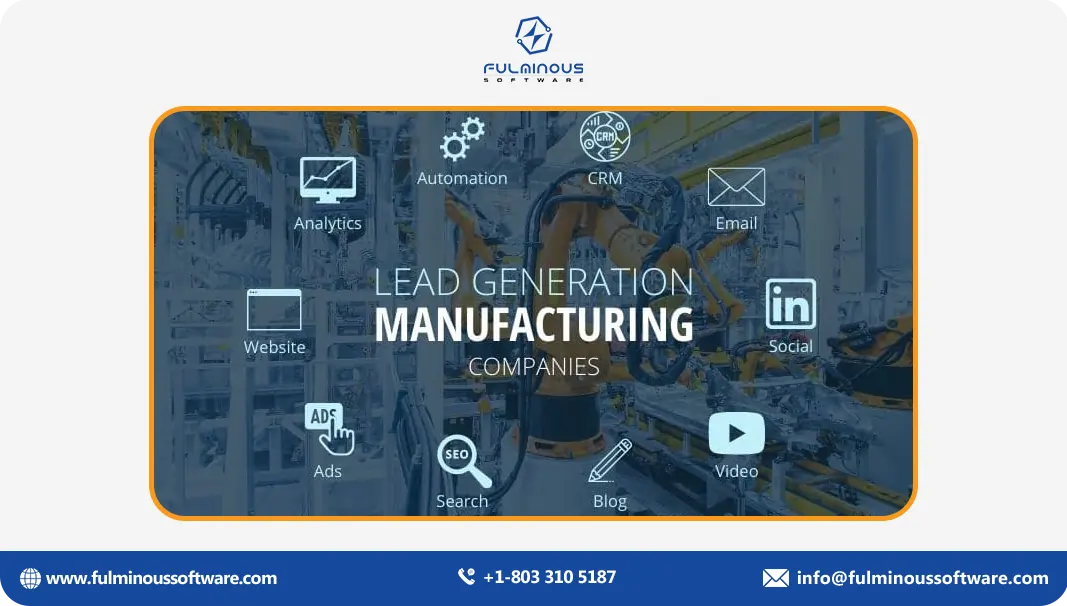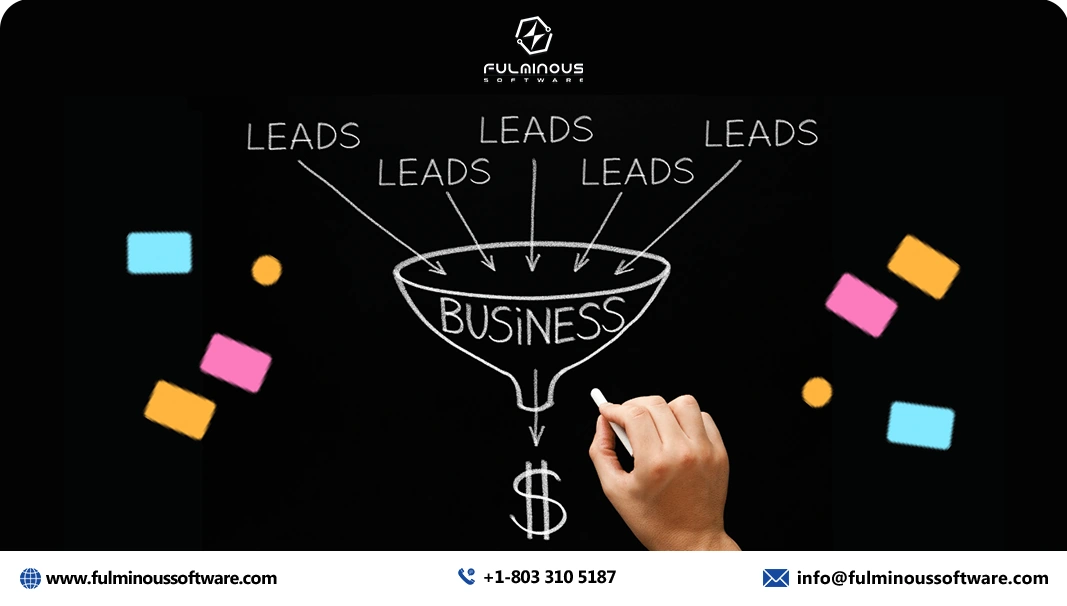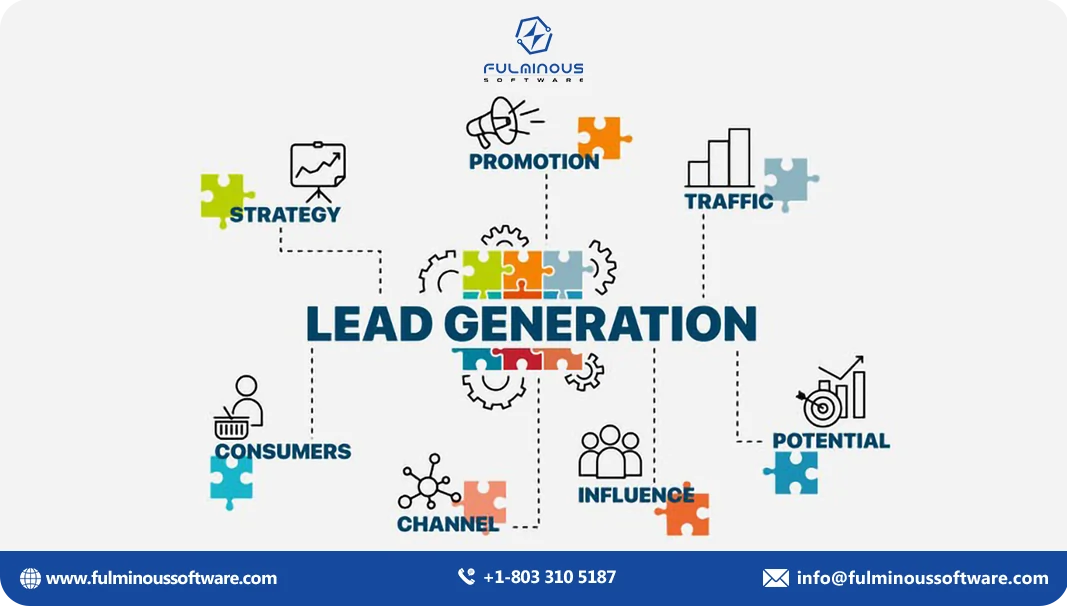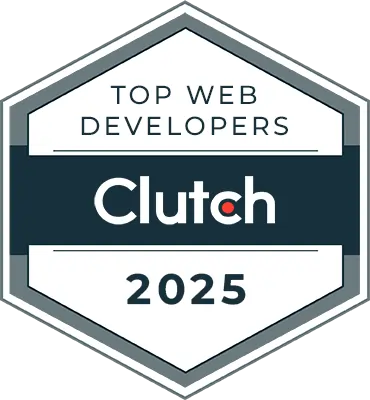Tips for Generating Quality Leads in the Manufacturing
Manish Kumawat
Last Updated on: 07 October 2025
Generating and identifying quality leads is the major concern of all businesses. 65% of companies state that their largest problem is generating leads. (Source) That’s why businesses are spending thousands of dollars to capture quality leads. But the fact is that the majority of the efforts are complete flop and then they switch to another method. Time, money, and effort could be wasted as a result of this.

Consider you’re planting a garden. You scatter seeds all over the ground, hoping to grow a beautiful flower bed. However, some seeds will not grow, and some plants that do will not be of the right variety. According to Hubspot, the average cost per lead for all businesses is $198.44.
How do you feel when you get a 2000-dollar lead lasting for only a short time after spending 10000 dollars in lead generation effort? Frustrated na?
The goal of manufacturing lead generation is to identify possible customers who are not only interested in your offerings but also a good fit for your company. They must have the funds, the power to decide, and the necessity of the product you are offering.
For this reason, concentrating on producing high-quality leads is crucial. These are the prospective clients who will appreciate your company over the long run and are most likely to become paying clients. They’re like the beautiful flowers that bloom in your garden. The methods for producing high-quality leads in the manufacturing industry will be discussed here.
Understanding Lead Generation in Manufacturing
Lead generation in manufacturing is a long process that starts with setting the target audience and converting them to customers. More than simply sending emails or cold calls, lead generation has vast dimensions. In simple words, it’s all about conquering the industry with capturing the audience’s minds.

Unlike selling directly to consumers, manufacturers are usually dealing with businesses. This means you're not just trying to convince someone to buy a product; you're selling to people who need to make sure it fits their company's needs. These folks might be engineers, buyers, or even bosses who are looking for quality, reliability, and a good price. So, how do you find these potential customers? It's a mix of knowing your target market and using clever strategies to get their attention. Think of it like casting a net in the right places and using the right bait to attract the fish you're after.
Generated Leads vs Quality Leads
Consider you're hiring for a new position. You post the job ad and receive countless applications. These are your generated leads. They're potential candidates who might be qualified, but not all of them will be the right fit for your company. Some might lack experience, others might not have the right skills, and still others might not be a good cultural fit.
Similarly, all leads are not quality leads. Quality leads are like the candidates you've been hoping to find. These are people who not only have the qualifications you're looking for but also have the right attitude, work ethic, and personality to be a valuable asset to your team. They're more likely to be successful in the role and contribute to the overall success of your company.
Likewise, a quality lead will provide a multi-dimensional boost to your business. Not only in economic terms, the relationship with quality leads will last for long terms and sometimes they can be the game changer of your manufacturing business.
So, how do you distinguish between generated leads and quality leads? Many businesses fail to identify this difference. Like understanding your job requirements and assessing potential candidates, you need to assess credibility, tenure, budget, intention, interest and many more elements to identify quality leads.
Stages of Lead Generation in Manufacturing
Lead generation in manufacturing is a multi-stage process that involves nurturing potential customers from initial interest to eventual purchase. Here are the key stages:
1. Awareness Stage:
- Attracting Attention: This stage involves creating content and marketing efforts that capture the attention of potential customers within your target market.
- Building Brand Awareness: Establish your brand as a trusted and knowledgeable resource in the industry.
2. Interest Stage:
- Engaging with Content: Potential customers start to engage with your content, such as blog posts, whitepapers, or social media posts.
- Providing Value: Offer valuable information and resources that address their needs and pain points.
3. Consideration Stage:
- Comparing Options: Potential customers research your products or services and compare them to competitors.
- Addressing Concerns: Answer any queries or worries they may have.
4. Intent Stage:
- Demonstrating Interest: Potential customers show strong interest in your offerings and may request more information or a demo.
- Nurturing Relationships: Continue to provide value and build relationships to keep them engaged.
5. Decision Stage:
- Making a Purchase: Potential customers make a decision to purchase your products or services.
- Closing the Deal: Effectively guide them through the sales process and close the deal.
6. Post-Purchase Stage:
- Customer Satisfaction: Make sure the consumer is satisfied and take care of any problems right away.
- Building Loyalty: Foster long-term relationships and encourage repeat business.
10 Secret Tips for Generating Quality Leads in Manufacturing
- Network Like a Pro: Attend trade exhibitions and industry gatherings to network with possible clients.
- Content is King: Create valuable content like blog posts and case studies to attract and engage your audience.
- Social Media Magic: Use platforms like LinkedIn and Twitter to connect with potential customers and share your expertise.
- Referrals Rock: Encourage happy clients to tell others about your company.
- Partner Up: Collaborate with other businesses in your industry to reach a wider audience.
- Email Magic: Send targeted emails to nurture leads and keep them interested.
- Know Your Customers: Use customer data to personalize your marketing efforts.
- Let Them Try Before They Buy: Offer free trials or demos to let potential customers experience your products firsthand.
- Customer Satisfaction is Key: Ensure that customers have a positive experience with your brand.
- Stay Ahead of the Curve: Keep up with industry trends and adapt your strategies accordingly.

Targeting Specific Industry Niches
The manufacturing industry is very large, and trying to reach everyone might not work well. Instead, it’s better to focus on specific areas where your products or services are most helpful.
First, figure out your niche by looking at your current customers and seeing which industries bring in the most money or have the best growth potential. Next, develop unique content and promotional materials that address the issues and demands of that particular market. Lastly, when contacting people in your niche, show them that you understand their industry and have solutions made just for them.
Utilizing CRM Systems for Lead Management
A CRM (Customer Relationship Management) system is essential for managing leads efficiently. A CRM helps you track interactions with potential leads, store contact information, and monitor the progress of leads through the sales funnel.
- Lead Scoring: Use your CRM to assign scores to leads based on their engagement with your content, website visits, or interaction with your sales team.
- Automated Follow-Ups: Set up automated email or task reminders to ensure that no lead falls through the cracks. Automated follow-ups can nurture leads over time and move them closer to a purchase decision.
- Reporting and Analytics: Analyze the performance of your lead generation efforts using CRM data. Track which channels are generating the most leads and refine your strategy accordingly.
Finding New Customers: Inbound vs. Outbound
Manufacturers have two options for getting new clients: inbound and outbound strategies.
Inbound Marketing
It’s similar to hanging an appealing sign. You make it interesting and helpful, so people come to you.
- Blogging: Write stories about things people care about in your business.
- Landing Pages: Make special pages on your website that get people's attention and make them want to give you their email.
- Lead Magnets: Give people free stuff, like ebooks or videos, in exchange for their email.
Outbound Marketing
It's like going door-to-door to tell people about your products. You go to them directly.
- Cold Emails: Send emails to people who might be interested in your products.
- Cold Calls: Call people directly to tell them about your products.
- Paid Advertising: Use PPC ads to reach people who are looking for things like what you sell.
Meeting People at Trade Shows and Events
Trade shows are like big parties where businesses can meet and talk. They're a superb way to showcase your goods and attract new clients. Decide what you hope to gain from a trade fair before you attend. Ensure that your booth is visually appealing and features captivating displays. Try to get people’s contact information and offer them free stuff as a thank you.
How to prepare for a trade show:
- Set goals: Decide what you want to get out of the show.
- Make materials: Prepare things like brochures and business cards.
- Design your booth: Make your booth look cool and easy to find.
What to do at a trade show:
- Talk to people: Speak and connect with the maximum number of individuals you can.
- Collect information: Get people's contact information.
- Give away stuff: Give people free things to get them interested.

Partnerships and Co-Marketing Opportunities
Working with other companies that complement your business can help you find new customers. By teaming up with companies in your supply chain or related industries, you can create marketing campaigns that benefit both of you. This helps each company reach new people.
First, look for companies that offer products or services that go well with yours. For example, if you make packaging machines, you could work with a logistics company. Then, you can create things like webinars, whitepapers, or case studies together. This way, more people see your brand, and both companies get noticed. Finally, you can share each other’s products through your marketing channels, allowing you to reach your partner’s audience and get more leads.
Using Customer Referrals and Word-of-Mouth
Happy customers can help you find new customers by telling others about your business. Encourage your current customers to recommend your company to people they know.
You can start a referral program where you give rewards to customers who bring in new clients. A discount, a complimentary item, or a little gift could be offered. Also, ask your satisfied customers to write reviews or give testimonials that you can share in your marketing. Good reviews help build trust and can attract more leads.
Using Data to Find New Customers
Using data can help you find better customers. Manufacturers can use data to understand who their target audience is and improve their marketing.
Start by doing market research to see trends, learn what customers like, and find areas where you can offer something better. This helps you focus on attracting good leads. Use tools like Google Analytics to see what people do on your website, which pages are popular, and what content makes people want to buy. You can also try A/B testing, where you compare different messages or pages to see which one works best at getting new leads.
Digital Marketing: Best way to Find New Customers
Till the emergence of digital marketing, manufacturers used trade shows, word-of-mouth, and referrals to find new customers.

The following are some ways that digital marketing might be beneficial:
Search Engine Optimization (SEO)
When someone searches online for a certain term, Search Engine Optimization (SEO) helps them find your website. Your website will receive more visitors if you employ the appropriate keywords that your target audience is searching for. It's critical for manufacturers to utilize terms that are relevant to their industry and products.
You may find the terms that people are searching for by using tools such as Google Keyword Planner. Make sure that the titles and descriptions of your website are understandable and useful, providing answers to any queries that visitors may have. Your website should also be user-friendly on mobile devices and load quickly. If it's too slow, you risk losing out on new clients since they may depart.
Content Marketing
Manufacturers might share their expertise to inform others about their goods and business practices. Writing blogs and articles about topics that customers want to learn about, such as how to select the best equipment or how your products aid in manufacturing, is one example. According to 74% of marketers, content marketing has been successful in generating leads. (source)
Sharing case studies that describe how your products have benefited others is another way to demonstrate to potential buyers how your products function in the real world. You can obtain the contact details of serious clients by providing whitepapers and e-books with comprehensive instructions. Finally, creating videos that demonstrate your production process or offer factory tours is a fantastic method to interact with your audience.
Email Marketing
Maintaining contact with potential customers through email marketing is beneficial. An effective email marketing strategy can convert interested visitors into paying clients. By organizing your contacts according to their interests, you may generate segmented email lists that will allow you to send them emails that are relevant to their preferences. Sales from email marketing are 50% higher than those from other lead-generation strategies. (source)
By using drip campaigns, you can create emails that will automatically be sent out over time, educating consumers about your products and maintaining their interest. To help customers feel valued and more connected to your brand, personalize your emails by using their name or particular interests.
Social Media Marketing
Even though many manufacturers aren't using social media marketing yet, it's a terrific approach to finding new customers. You may interact with people, share information, and display your work on social media sites like Facebook, Twitter, and LinkedIn. LinkedIn is particularly useful for connecting with other companies. Six hours a week is all it takes for 66% of marketers to produce leads from social media. (source)
Although Facebook and Instagram cater more to general customers, you may still run advertising targeted at particular demographics and provide behind-the-scenes glimpses into your company. You can promptly disseminate news on Twitter and inform prospective clients.
These days, digital marketing is a powerful instrument for manufacturing businesses to locate and establish connections with new clients. Collaborating with top digital marketing firms.
Capture Plenty of Quality Leads with a Feature-rich Manufacturing Website
Websites are the primary source of leads for 90.7% of marketers, whilst blogs are used by 89.2%. (source) A manufacturing website with plenty of features is essential for generating a lot of leads. First, ensure that users can easily navigate your website and locate what they’re looking for. Put obvious calls-to-action (CTAs) on each page, such as "Contact Us" or "Get a Quote." Providing downloadable materials, such as product manuals or brochures, in return for contact information is a fantastic method to generate leads.
Showcase case studies or testimonials as well to establish credibility. A mobile-friendly design is important because many visitors will access your website via their phones. Finally, you may increase your chances of capturing leads by implementing chatbots or live chat to help answer queries and keep potential consumers interested.
Latest Technologies for Lead Generation in Manufacturing
Manufacturing companies can enhance their lead generation efforts by embracing the latest technologies.
1. Artificial Intelligence (AI) and Machine Learning:
- Predictive Analytics: Use AI to predict which leads are most likely to convert into customers based on historical data and patterns.
- Personalized Recommendations: Offer personalized product recommendations based on individual customer preferences and behavior.
- Chatbots: Use chatbots driven by AI to respond to inquiries and offer immediate customer service.
2. Internet of Things (IoT):
- Data Collection: Gather valuable data from connected devices to gain insights into customer behavior and preferences.
- Predictive Maintenance: Use IoT sensors to predict equipment failures and proactively reach out to customers with maintenance offers.
3. Virtual and Augmented Reality (VR/AR):
- Product Demonstrations: Provide immersive product demonstrations that allow customers to visualize and experience products before purchasing.
- Remote Assistance: Use VR/AR to offer remote technical support and assistance.
4. Social Media Marketing Automation:
- Scheduling Posts: Automate social media post scheduling to maintain a consistent presence.
- Engagement Monitoring:Track social media engagement metrics and respond to comments and messages promptly.
5. Account-Based Marketing (ABM):
- Personalized Campaigns: Tailor marketing campaigns to specific accounts or target personas.
- Data-Driven Insights: Use data to identify key decision-makers within target accounts and personalize your outreach.
6. Marketing Automation:
- Lead Scoring: Automate the process of scoring leads based on their behavior and engagement.
- Personalized Nurturing: Send automated, personalized email campaigns to nurture leads at different stages of the sales funnel.
7. Predictive Lead Scoring:
- AI-Powered Scoring: Use AI to predict a lead's likelihood of converting into a customer based on various factors.
- Prioritized Outreach: Focus your sales efforts on high-scoring leads to maximize efficiency.
8. Digital Twin Technology:
- Virtual Representations: Create digital twins of your products and manufacturing processes to simulate scenarios and identify potential issues.
- Customer Experience: Use digital twins to provide customers with a virtual experience of your products.
Conclusion
So, finding the right customers is super important for growing a manufacturing business. You can do this by focusing on specific groups of people, using special software to track your customers, and using different marketing methods. It’s all about finding people who are a good fit for your company.
Using online tools like websites, digital marketing, SEO, and social media can also help you find new customers. If you do it right, you can get a lot of leads and keep your business growing strong. If you use the above-mentioned methods in the right way, you can generate high-quality leads rather than normal leads.
One high-quality lead is better than a thousand normal leads. You can collaborate with skilled teams like Fulminous Software to get strategies and solutions for generating quality leads. If you are confused about differentiating leads and high-quality leads, Fulminous team experts are ready to help you. Contact now.
FAQs
- Q1. What does lead generation mean in manufacturing?
- A: Lead generation is the process of finding people who show interest in your products and may become buyers in the future.
- Q2. Why should you focus on high-quality leads?
- A: High-quality leads are more likely to make a purchase and become long-term customers.
- Q3. How are generated leads different from high-quality leads?
- A: Generated leads show interest in your products, while high-quality leads are more likely to seriously consider buying.
- Q4. What is the awareness phase in lead generation?
- A: In the awareness phase, companies try to attract attention through ads or content to introduce people to their products.
- Q5. How can social media help generate leads?
- A: Social media allows companies to share updates, connect with potential buyers, and showcase their products to attract new customers.
- Q6. Why are free trials or demos important for companies?
- A: Free trials give people a chance to test the product, helping them decide if it suits their needs before purchasing.
- Q7. How do trade shows help with lead generation?
- A: At trade shows, companies can display their products and engage with people who may be interested in buying.
- Q8. What is a CRM system, and why is it useful?
- A: A CRM system helps businesses manage customer relationships and track leads, ensuring no sales opportunities are missed.
- Q9. How can companies use referrals to attract new buyers?
- A: Satisfied customers often refer others to the company, helping to bring in new potential buyers.
- Q10. Why should companies prioritize making their website user-friendly?
- A: A user-friendly website allows visitors to easily find information, increasing the chances they will turn into customers.
HIRE A TOP SOFTWARE DEVELOPMENT COMPANY

 Verified
Expert in Software & Web App Engineering
Verified
Expert in Software & Web App Engineering
I am Manish Kumawat, co-founder of Fulminous Software, a top leading customized software design and development company with a global presence in the USA, Australia, UK, and Europe. Over the last 10+ years, I am designing and developing web applications, e-commerce online stores, and software solutions custom tailored according to business industries needs. Being an experienced entrepreneur and research professional my main vision is to enlighten business owners, and worldwide audiences to provide in-depth IT sector knowledge with latest IT trends to grow businesses online.
Partner with Top-Notch Web Application Development Company!
Discuss your Custom Application Requirements on info@fulminoussoftware.com or call us on +1-903 488 7170.
15 Days Risk-Free Trial

